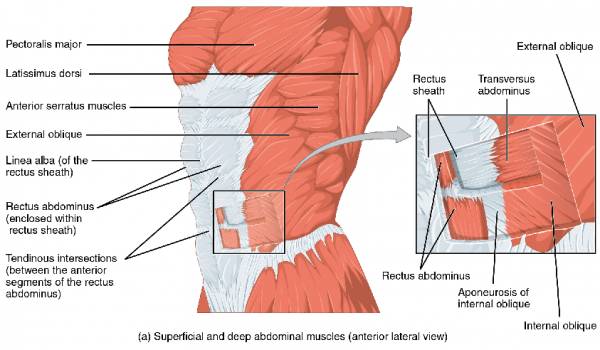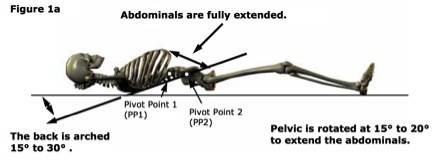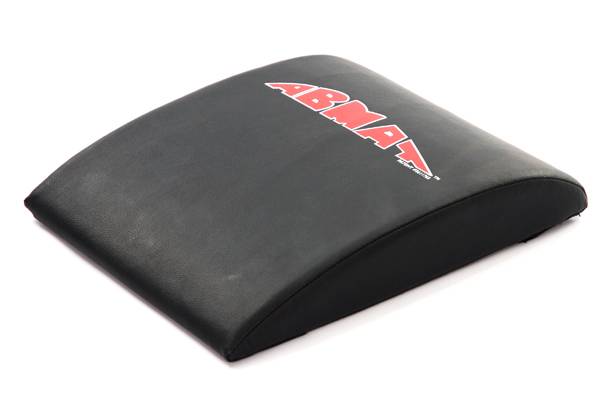I love Annie. Actually, I admire the two human Annies (Annie Sakamoto and Annie Thorisdottir) for their fortitude and cheerful display of the human spirit under duress, but today I’m talking about my love for the girl, the WOD, the benchmark. 50-40-30-20-10 sit ups and double unders.
Every time that I do this workout, there is always someone in the class who asks, “Why do I need an AbMat?” This is usually followed by a discussion as to what shorts or pants students have worn and how bad their monkey-butt is going to be when they are finished. What’s sad is that no one can seem to truly answer this elusive question. Why do we need an AbMat? And for goodness’ sakes, which way do we turn it?
Quick Anatomy Lesson: Your Abdominal Muscles
Before we even get into the reason for the AbMat, let’s talk about the abdominal muscles. Yes, they’re super hot and sexy when developed, and we all want them without having to give up beer and gluten. (Good luck with that.) But there’s some basic anatomy that needs to be understood. The anterior and lateral trunk muscles function in multiple ways: they support the abdominal viscera (that’s what holds your insides together), breathing, and they are concerned with trunk movements of flexion, lateral bending, and rotation. Perhaps one of the most fascinating parts of this design is that the fibers in different layers run in different directions, contributing to their gross strength.

The rectus abdominis is the most superficial of these muscles and attaches the ribcage to the pelvis. Its primary role is trunk flexion. The internal and external obliques also attach the ribs to the pelvis, and are responsible for rotation and side bending of the trunk. There is another muscle, and it’s one that like the gluteus medius goes on vacation frequently. It’s called the transverse abdominis. This muscle also connects the ribs to the pelvis, but has a line of application much like a weight belt. It’s fibers run on the horizontal and it is responsible for abdominal compression during movement.
As I have described with other muscles in other articles, most of our muscles work in three planes of motion. By functioning in three planes of movement, a muscle group can stabilize in one plane and exert movement in another.
What Happens in a Sit Up
In a sit up, like any other movement we do, it is imperative that our body moves through a complete and full range of motion. What this means is that if you lie on the floor, your spine is in a neutral position, or perhaps has a little flexion. To get the most out of a sit up, the abdominals must go from a position of maximal length to a position of minimal length. This is achieved by creating two pivot points, one in the spine and another in the pelvis. The lumbar spine should be extended fifteen to thirty degrees, and the pelvis should be in an anterior tilt of ten to fifteen degrees.

Image courtesy of Koch, Blom, and Jacob. Sit Ups Revisited, 2004.
What happens next is nothing short of amazing human movement. A group of fully-extended muscles with attachments at two joints creates tension. When the individual flexes the trunk from that position, the muscle is able to generate a large amount of power and force. We like that, and it makes us stronger.
The Beauty of the AbMat
 The AbMat, when placed under the lumbar spine with the higher portion towards your bum creates this beautiful environment for the abdominals to move through their full and available range of motion. It allows for the extension needed in the lumbar spine and the anterior tilt in the pelvis, thereby giving the abdominal muscles what they yearn for – full range, elongation, and forceful contraction.
The AbMat, when placed under the lumbar spine with the higher portion towards your bum creates this beautiful environment for the abdominals to move through their full and available range of motion. It allows for the extension needed in the lumbar spine and the anterior tilt in the pelvis, thereby giving the abdominal muscles what they yearn for – full range, elongation, and forceful contraction.
As I was searching the literature for this article, I came across several discussions damning the AbMat sit up. I think one of them listed the movement as the “most worthless CrossFit exercises ever” or something. But let me ask you this, do you think that Globo Gym Joe can come into a CrossFit box and hop on a glute-ham developer (GHD) and do a correct GHD sit up? Didn’t think so. The AbMat sit up is wonderful to develop full spinal range of motion abdominal strength so that a person can start to think about getting on a GHD. It also helps develop cursory strength for toes-to-bar and knees-to-elbows, and gets the abdominals thinking about midline stability during barbell movements and pretty much everything else we do.
Use your AbMat correctly (but be aware of the type of pants you choose to wear because no one likes monkey-butt) and get yourself midline strong. When the zombies come out, you’ll be happy you used an AbMat. Globo Gym Joe isn’t going to know how to fight them with his crunches and partial range of motion bicep curls.
References:
1. Smith, Weiss, and Lehmkuhl. Brunnstrom’s Clinical Kinesiology. F.A. Davis. 1983.
2. Koch, Blom, and Jacob.Sit Ups Revisited, 2004.
Photo 1 courtesy of CrossFit Impulse.
Anatomy chart by OpenStax College [CC-BY-3.0], via Wikimedia Commons.






